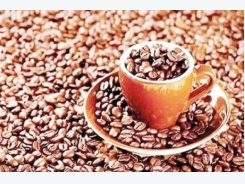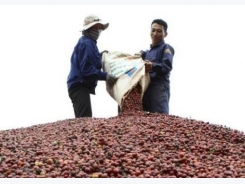Problems in reduction of dependency on imported corn

Corn is one of the 10 agricultural products that Vietnam imports with the largest volume. If Vietnam does not speed up production to meet the shortage of corn, it is expected that spending billions of dollars for corns imports will continue for a long time.
Promoting genetically modified corns is considered as one of the most effective ways to improve corn productivity. Photo: N.Thanh.
Imports increased by more than 11%
According to the Ministry of Agriculture and Rural Development, in the first 7 months of 2017, imported corns reached 4.13 million tons, worth US$ 825 million, an increase of 9% in volume and more than 11% in value over the same period in 2016. Argentina and Brazil are two main markets for corns in the first half of the year, accounting for 49.5% and more than 15% of total import value, respectively. In particular, in the first 6 months of the year, imports of Thai corns increased sharply in both volume and value compared to the same period last year with an increase of 14.9 times and 3.54 times, respectively.
In fact, in recent years, spending billions of US dollars every year to import corns is no longer a strange thing. In 2016, Vietnam spent more than US$ 1.6 billion to import 8.3 million tons of corns for domestic processing needs. The reason for the fact that Vietnam regularly has to spend foreign currency to import corns, Mr. Tran Xuan Dinh, the Director of the Department of Crop Production (under the Ministry of Agriculture and Rural Development) said: The country's corn area is currently more than 1 million hectares, but due to difficult terrain and unfavorable farming conditions, average yield is still low at 4.6 tons per hectares.
CropLife predicted that in the coming time, Vietnam's demand for animal feed would continue to increase, along with the growing demand for corns, while domestic production meets 40%. It is forecasted that global corn consumption will reach 1,074 million tons by 2020 (1,021 million tons in 2016), with Asia and Africa increased by 20%. With current capacity (in 2016, the world produced about 1.040 million tons of corns), by 2050, world corn production will not be enough to meet demand. This means that the supply of corns will not be redundant for export to the missing markets such as Asia, including Vietnam.
Focusing on increasing productivity
Some experts said that if Vietnam does not quickly solve the problem of shortage of corns, besides the loss of foreign currency, in the long run, Vietnam may still face difficulty in purchasing corns. The important solution now is to increase productivity on available acreage to increase yields through the promotion of genetically modified corns. These varieties will minimize pest while reducing input costs as well as negative impacts on the environment.
In this regard, Mr. Le Ba Lich, Chairman of the Vietnam Animal Feed Association said that Vietnam was an agricultural country but Vietnam has to import corns and many other commodities such as soybean meal, additives, antibiotics, vitamins ... on animal feed production. In addition, Vietnam can not meet the requirements of many simple technological advances. As for corns, Vietnam should promote the development of many forms, especially genetically modified corns. This is the way which many countries like America, Argentina have applied. Those countries not only meet domestic demand for corn but they also export to other countries, including Vietnam.
In fact, in order to gradually reduce dependence on imported corns, in addition to focusing on the production of new varieties of corns for high productivity, preventing pests and diseases, in recent times, the conversion of crops, especially reduction of the area of rice cultivation and increasing the area of corn cultivation have been conducted in many localities throughout the country and gained initial positive results. The Mekong Delta region has been identified as the key area for the conversion of crop structure on ineffective rice so as to reduce the pressure on rice consumption and increase the yield of some domestic market crops, especially corns.
The Ministry of Agriculture and Rural Development (MARD) plans to transform 700-800 thousand hectares of inefficient rice crops into other annual crops by 2020, which identifies corns as a key transgenic crop. At present, the Ministry has been guiding the localities to formulate the master plan, the detailed transformation plan, the area to improve irrigation system to suit the conversion of planting; prioritize investment and encourage enterprises to invest in studying the determination of sets of varieties, technical packages and synchronized mechanized machinery systems for conversion.
Related news
Tools

Phối trộn thức ăn chăn nuôi

Pha dung dịch thủy canh

Định mức cho tôm ăn

Phối trộn phân bón NPK

Xác định tỷ lệ tôm sống

Chuyển đổi đơn vị phân bón

Xác định công suất sục khí

Chuyển đổi đơn vị tôm

Tính diện tích nhà kính

Tính thể tích ao




 Rice export target set at 5.2 million tonnes…
Rice export target set at 5.2 million tonnes…  Ministry finds no proof of alleged pepper price…
Ministry finds no proof of alleged pepper price…